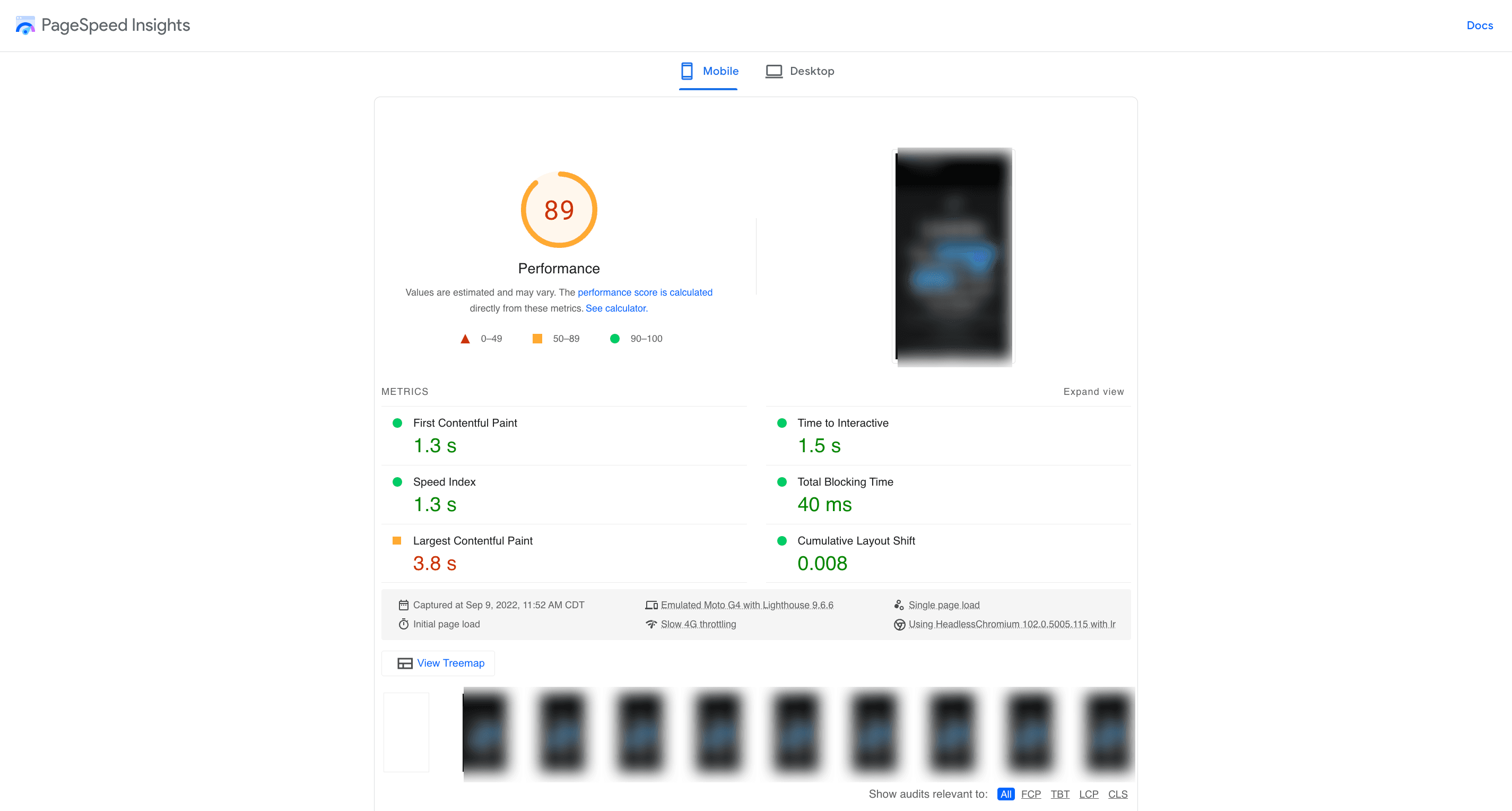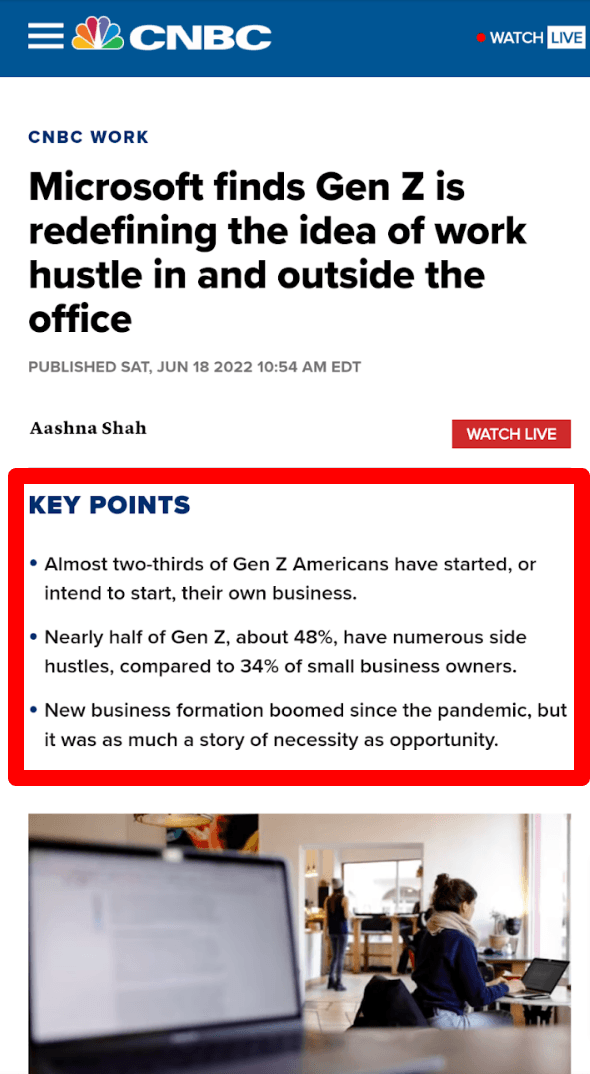Table of Contents
QUICK SUMMARY:
Mobile marketing effectively engages customers on mobile devices. This article outlines 14 mobile marketing tips to optimize marketing efforts and ensure campaigns are accessible and impactful on smartphones and tablets. These tips aim to help businesses improve their connectivity and responsiveness to meet their audience's mobile-first preferences.
Mobile is mainstream, and it's no longer safe to assume that your client's customers are finding them through desktop search. Is your marketing strategy designed with a mobile audience in mind?
What Is Mobile Marketing?
Mobile marketing strategies aim to reach potential customers where they are most likely to be engaged: on their mobile devices. This means that businesses must design their marketing campaigns specifically for the smaller screens of smartphones and tablets.
Additionally, since people are generally more likely to have their phones with them at all times than other types of electronics (such as laptops or desktop computers), businesses need to make sure that their mobile marketing campaigns are easily accessible no matter where potential customers are.
And you, as an agency, need to find more ways to differentiate yourself so that you get more clients and increase your marketing spend.
The Benefits of Mobile Marketing
There are many advantages to using mobile marketing as a part of your overall marketing strategy.
Steve Jobs said it best, “Get closer than ever to your customer…” If the majority of customers are using mobile, your marketing strategy must be mobile.
Mobile marketing is one of the most efficient and effective ways to reach a target audience. It allows you to connect with them personally and deliver your client's message in a way that is convenient for them.
Here are some benefits of mobile marketing:
1. Reach Your Target Audience Wherever They Are
Your target audience is always on the go, so it’s important to be able to reach them where they are. Mobile marketing allows you to do just that. You can send text messages, push notifications to smartphone users, or even launch mobile ads that will pop up on their phone when they’re near your business or searching for something related to what you offer.
2. Mobile Marketing Allows You To Target Your Audience Through Various Channels
Mobile marketing is a form of advertising that allows businesses to target their audience through various channels, including SMS, MMS, and social media. This type of marketing can be very effective in reaching potential customers who may be difficult to reach through other means.
Additionally, mobile marketing allows businesses to track and measure the results of their campaigns in real time, which can help them to make adjustments as needed.
3. Mobile Marketing Is a Cost-Effective Way
Mobile marketing is a cost-effective way to reach out to potential and existing customers. It allows businesses to target specific audiences with personalized messages that can be delivered in real-time. Additionally, mobile marketing campaigns are often interactive and allow customers to opt in to receive updates or special offers.
4. Mobile Marketing Is Personal
Mobile marketing is personal, with methods that include texting your mobile device users, reaching them on social media, and combining them with friends or family. You will be able to find out more if your friends visit your site. It is also more open and responsive.
5. Mobile Marketing Enables A Good Customer Experience
Mobile marketing is not all about sales but about providing a great customer experience. Whether that is a user interface, connecting them via social media platform of their choosing, or avoiding the hassle of copying an email address, going to their email account, and pasting the email address to contact you.
Today, people need comfort and ease of living. A customer can easily access a business information app or website from a smartphone or tablet. With this convenience and consolidation, you create a good customer experience.
Mobile marketing allows customers to connect with businesses conveniently and easily. Customers can access information about products and services, make purchases, and connect with customer service representatives through their mobile devices.
The Disadvantages of Mobile Marketing
However, mobile marketing also has some disadvantages that should be considered before using it. One of the biggest concerns is privacy; because mobile devices are personal and always with us, they can collect a lot of sensitive information about us.
This information can then be used for targeted advertising, which some people find intrusive and annoying. If someone is bombarded with too many text messages or advertisements, they are likely to delete the app or unsubscribe from the service. This means that businesses need to be careful about how often they send out messages and make sure that the content is relevant and interesting.
Mobile phones are a bit more personal, so consider how people live with their phones and don’t spam them! It can be a less forgiving space than desktop or traditional marketing.
Best Mobile Marketing Tips
If your mobile marketing strategy needs some work, don't worry. A few simple changes are often all it takes to bring your mobile marketing up to speed. Here are a few things you can do to improve your strategy for mobile right away.
1. Optimize The Website for All Screen Sizes
Is your client's site mobile friendly? As mobile devices become more and more popular, it's important that any website is optimized for all screen sizes. This means ensuring that the website looks good and is easy to use on different smartphones, tablets, and desktop computers.
We’ve seen a drastic transition from a 4-inch screen to 6-plus inches and now, foldable screens.

You can use Google Analytics or integrate your GA with AgencyAnalytics and create or use our website traffic report template, to discover which devices are being used the most.
A responsive design template will automatically adjust to the screen size of the device being used. This is a great option for any website, but it is especially important for websites that are used on smartphones.
There is no doubt that mobile apps are changing the way businesses market themselves. By creating a mobile app, businesses can access new markets and connect with customers in powerful ways.
While this might not work for everyone, anyone who provides loyalty programs, rewards, gamification, and taking the brand building to the next level might consider creating a mobile app compared to a responsive website design to maximize mobile benefits, such as sending out push and/or in-app notifications.
Mobile applications have the benefit of leveraging mobile device functions such as a camera, contact list, GPS, phone calls, accelerometer, compass, and so on. Mobile consumers devote 88 percent of their time to mobile applications and only 12 percent to mobile webpages.

Creating a mobile website and app for your company might be expensive. Depending on your budget and business goals, you may have to choose one. Mobile apps can enhance conversions and retention compared to other channels. Mobile apps improve personalization, efficiency, and other advantages.
2. Make The Site Easy To Use
Having a responsive site isn't the only thing you can do to make sure you're mobile-friendly. Take a look at your site's mobile version and ensure it provides a good user experience. Here are a few of the main things to check:
Is your site's font big enough to shop up clearly on mobile devices? Users shouldn't have to squint.
Do your headlines take up too much space on each page? Short, snappy headlines are best for mobile because they don't dominate the screen.
How easy is it to skim your pages? To improve readability, break up your text with headers, bullet points, and short paragraphs.
Are your navigation menus and CTA buttons easy to use? There's nothing more annoying than trying to tap a too-small button and hitting a different one by mistake.
How easy is it to find all your content? Avoid hiding content or burying it at the bottom of the page. Your mobile site should be clean, organized, and straightforward.
3. Speed up The Site
Page speed has been a ranking signal for desktop sites for a while now, and it's common knowledge that a slow site will drive visitors away. And since July 2018, Google uses page speed as a ranking signal for mobile search, too.
Fortunately, checking your site's speed is easy. Google recommends using the open-source Lighthouse tool to audit your site for any speed-related issues.
One of Google's newest tools, PageSpeed Insight, allows you to test your page speed on mobile networks specifically.

Alternatively, using the AgencyAnalytics tool can expedite your page speed audit. Instead of performing one URL at a time, you can run all of our client’s URLs so you can prioritize which URLs you should work on first:

4. Write Content That Can Be Read Quickly
In today's fast-paced society, people are looking for content they can read quickly. They don't have time to read long articles that are filled with fluff. That's why you need to write content that is easy to read and provides the reader with the information they are looking for.
You also need to use short paragraphs and concise sentences. This will make it easier for the reader to scan your article and find the information they are looking for. Adding TL;DR ("too long; didn't read") or key points to show your readers what they are going to get out of spending their time reading your content can help reduce the bounce rate and help them understand they are going to get the information they are looking for:

You can also create a table of content that shows each key point, and your readers can go to the section they might want to read compared to reading the whole article.

When you are writing an article, it is important that you group your content together in a way that makes sense to the reader. You can do this by using headings throughout your article and subheadings as needed. Headings help the reader quickly and easily navigate through your article and locate the information they are looking for. Write Descriptive Titles. When you are writing titles, try to make them as descriptive as possible.
5. What Type of Images Work Best for Mobile?
Images are a key part of any mobile marketing strategy. But what type of images work best for mobile?
There’s no one answer to that question. It depends on your goals and your target demographic, from hilarious memes to animation to standard stock photos. Converting these images to next-gen formats and lazy loading is going to help with how fast your site loads. And there are several tools out there that can help you.
There are a few general tips to keep in mind when choosing images for your mobile campaign.
First, make sure the image is easy to view on small screens. Avoid complex designs or tiny text. Also, be aware of how much bandwidth your images will use. Large files can slow down loading times and cause frustration for your users.
According to HTTP Archive:
The median size of a desktop website in 2022 is 1010.2 KB
The median size of a mobile website in 2022 is 875.9 KB

Second, choose images that are relevant to your campaign. If you’re promoting a new product, use an image that showcases the product in action. If you’re running a contest, use an image that captures the excitement of winning.
Lastly, make sure the image is relatively large in size. The optimal image resolution for most smartphones is 640 by 320 pixels. However, however, you should preferably keep the original image's aspect ratio; otherwise, the output image would be deformed.
6. Focus on Local Marketing
A large percentage of mobile searches are for local businesses or "near me" terms. Local SEO is a topic in itself.
But here are a few effective mobile marketing strategies to get more location-related traffic.
Keep your Google My Business page up-to-date. Having a GMB page is the most critical aspect of local SEO.
Design your content strategy around local keywords. Don't limit yourself to using your city as a keyword, either. Other local terms like your neighborhood or street name are also useful keywords that may be easier to rank for.
Get your business listed in as many local directories as you can. Yelp, Bing, and industry-specific directories can all bring you more traffic.
Make it as easy as possible for people to get in touch with you. Display your location, phone number, and email address on all of your business pages around the web. A click-to-call option can also encourage more people to reach out to you.
And there is proximity marketing, a type of marketing that uses location-based data to target consumers with relevant, personalized messages. This can be done through a variety of channels, including Bluetooth beacons, GPS, WiFi, and NFC.
The goal of proximity marketing is to reach consumers when they are most likely to make a purchase or take an action. For example, if you own a clothing store, you could use proximity marketing to send discounts and coupons to shoppers who are near your store.
Proximity marketing can be highly effective because it allows businesses to target consumers at the moment when they are most likely to convert.
Check out our local seo report template to showcase your SEO results
7. Create Mobile-Friendly Emails
Are your marketing emails designed to look good on a smartphone? They should be since more than half of all emails are opened on a mobile device. Here are some tips for writing mobile-friendly emails:
Use short subject lines. Mobile devices display fewer characters than desktop computers do, so your subject line is less likely to get cut off if it's concise.
Pay attention to your preheader text. Preheader text is the short email preview displayed underneath your subject line. Maximize your email's impact by writing something that makes people want to read the rest.

Preheader text examples. Source
Keep your messages short and simple. No one wants to scroll through a wall of text on mobile. Use images sparingly, or don't use them at all.
Use clear, simple calls to action. For instance, include a prominent CTA button at the end of your email.
8. Announce Promotions via Text
Marketing emails often go unread. Texts, on the other hand, usually get opened. Try offering special deals through text messages and see what kind of response you get. This is especially effective if you send your text subscribers exclusive deals that other customers don't see.
Text messages can be very invasive. There’s very strategic planning involved as well as providing potential clients the option to limit the amount of text and the type of text they should receive. Sending a promotional text that is not related to your audience can lead to your downfall.
9. Incorporate Video Into Your Content Strategy
It's easier to watch a video on a small screen than it is to read text. Mobile users love video: a little more than half of all mobile traffic is used for video today, and in 2023, that figure is expected to rise to 75%.
So if you want to reach more mobile users, creating a few marketing videos is a great way to do it. If you're not sure where to start, try getting your feet wet with a free animation tool online -- these tend to be fairly approachable for beginners.
10. Optimize for Micro-Moments
Have you ever pulled out your phone to look up a quick fact or find a tutorial? That's what Google calls a micro-moment. Not to be confused with micro-conversions, micro-moments are moments when people turn to their mobile devices to help them solve a problem, make a purchase, or find a piece of information -- all in just a few seconds.
As people become increasingly attached to their smartphones, micro-moments are becoming a more common part of everyday life. Think about what kinds of micro-moments might lead people to your content, and then work on optimizing for those queries.
11. Optimize for Voice Search
Some mobile users prefer using voice search instead of typing their query. Voice search is a little different from text search because it tends to take the form of full questions rather than isolated keywords and sentence fragments.
In other words, people talk to their phones the way they'd talk to another person. What this means for you: it's smart to think about what kinds of voice search queries people might use to find your site. Then optimize for the long-tail keywords in those queries.
12. QR Codes
QR codes are quickly becoming one of the most popular ways to provide quick access to information for mobile devices. They are easy to create and can be used to provide a wide variety of information.
How can you use QR codes for a more effective marketing approach that reaches, engages, and converts your target audience?
Send consumers to a website/landing page. QR codes can lead to registration or landing pages/websites. This eliminates the difficulty of exploring the website.
Call your company: You'll engage an audience during business conferences. Interested business partners can scan your booth or station's QR code to get your contact information. You may adjust the QR code to ring the recipient's phone immediately.
Text: The user only receives the message after scanning the QR code. SMS marketing benefits most from QR-coded communications. It's used for sales, user support, product updates, and SMS registration.
Email: QR codes for sending emails enable you to read and track newsletter, email marketing, and email performance rates (e.g., open and bounce rates). The user can also scan the QR code to continue reading the email on his phone. Your email will be available across platforms.
Apps: Once you scan the QR code, the app download will begin. For example, Spotify's tracks now include QR codes. By scanning a QR code, users may share or suggest their music to others.
Business address: If a website visitor wishes to visit your office, they can scan your QR code. QR codes may offer instructions to your company instead of internet maps.
Promote social media pages: Those who enjoy your product or service can follow your social media accounts for updates. If they follow your social network using the QR code, they may get a discount or coupon.
E-commerce: Businesses use QR codes for discounts and promotions. By using a QR code, a customer can obtain a receipt or menu on his phone.
Things you should know before using QR Codes:
Use QR codes in your marketing plan if you give a clear call-to-action (CTA). Your QR code should be user-friendly.
Test the QR code on several devices and apps to ensure it gives the proper consumer data.
QR codes depend on internet connectivity. If a store location has connection issues, it might be hard for anyone to download a .pdf or large file.
There are a lot of benefits and uses for QR codes. In addition to saving time and energy, QR codes let you measure your marketing efforts. However, to ensure the effectiveness of your promotional initiatives, you must determine the place, time, and frequency.
13. Encourage Social Engagement for Mobile Marketing
Simply having a mobile responsive design is not enough. To be successful, businesses must encourage social engagement.
There are a number of ways businesses can encourage social engagement among their app users. One way is to make it easy for users to share information about your client’s business with their friends and family members.
Another way is to reward customers for engaging with your app by offering incentives such as discounts or bonus points.
Last but not least, businesses should use user-generated content as a means of marketing their products and services. For instance, if you have a restaurant client and customers post pictures of their meals, you can use this content to promote your restaurant, run or reward any Tik Tok viral moments and so on.
Check out our social media marketing report template you can use to create report for your clients.
14. Optimize Opt-in (and Opt-Out) Forms for Mobile
The easier you make it for people to sign up for your email list or newsletter, the more subscribers you'll get. And the easier you make it to unsubscribe, the fewer complaints you'll receive.
Here are some tips to make your opt-in and opt-out forms work well on mobile devices:
Use a short form. Keep the fields to a minimum - just name and email address, if possible.
Use social logins instead of having them fill out a long form.
Use a large, easy-to-tap button. Make it clear where people should tap to sign up or unsubscribe.
Use clear labels. Make sure the labels are legible on small screens.
Use colors that stand out against the background. Dark colors on light backgrounds work best, and vice versa.
And, of course, a responsive design for mobile!
Wrapping up
Mobile marketing isn't harder to do than traditional marketing. However, there are a few extra things that you should be aware of if you want to reach your mobile audience most effectively. Put these tips into practice for yourself today, and your mobile marketing strategy will be in good shape.
Automate your reporting and put all your clients’ marketing metrics under one roof. Try AgencyAnalytics free for 14 days!

Written by
Joe is the co-founder and CEO of AgencyAnalytics, a marketing reporting platform used by more than 7,000 agencies. With experience creating multiple businesses, he thrives on tackling the challenges of sustainable growth and innovation.
Read more posts by Joe KindnessSee how 7,000+ marketing agencies help clients win
Free 14-day trial. No credit card required.





